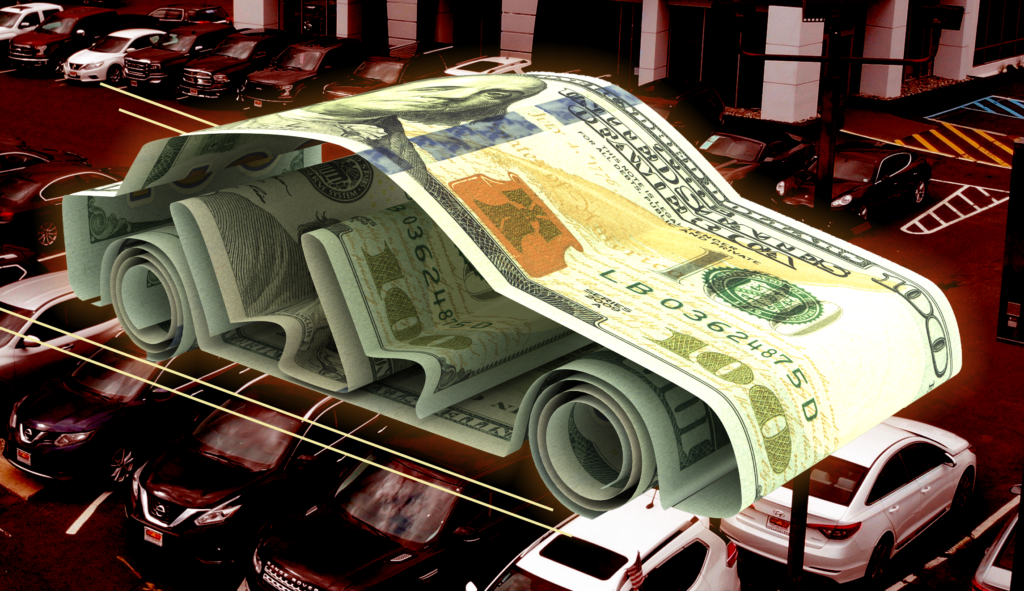

Prices of new and used vehicles have risen stratospherically over the last several years, putting many drivers who would normally be shopping for new or lightly used wheels in a bind. December saw average purchase prices of new vehicles at $48,759 per, according to Kelley Blue Book, the industry standard.
Believe it or not, the price guide considers that a “buyer’s market,” or at least progress on the road toward one. The December price was up from the previous month but down from the high rubber mark set in December 2022. That marked the fourth straight month of year-over-year declines.
LOSING ITS SPARK: THREE REASONS EV PRODUCERS ARE STRUGGLING TO SELL CUSTOMERS ON THE FUTURE
“When we look at price strength, the pandemic created a seller’s market in which new vehicles were transacting above manufacturers’ suggested retail price in 2022,” said Michelle Krebs, executive analyst for Cox Automotive, which owns Kelley, in a statement.
She added, “That market is all but gone now, as higher inventory has led to higher incentives and discounts‚ lower margins for dealers — and vehicles are now typically selling for under MSRP. The shift from a seller’s market to a buyer’s market is well underway.”
As far as the used car market goes, we see a similar dynamic in play. Prices were up slightly in December, with used cars selling for an average of $25,446, a hike of about $200 from November. Again, year-over-year comparisons have the price down about 3% for the year.
Great deals in the used car market are currently hard to come by and likely won’t be found on car lots. That’s because many dealerships had to pay top dollar and then some.
In 2021 and 2022, social media was lousy with stories of people who sold their cars back to dealerships for more than they paid for them. Now those overpriced chickens are coming home to roost.
Interest rates are also an issue. Car financing used to be relatively cheap money. The Federal Reserve’s interest rate hikes to tame inflation have made it much more difficult for dealerships to offer rock-bottom options, even to customers with great credit.
COVID-19 and Other Price Hikes
How did the market for vehicles get so out of whack? Experts say there are many causes of it, only one of them being the recent pandemic.
COVID-19 and related lockdowns were huge disruptors of cars worldwide, of course. Ports were shut down intermittently, which made shipping difficult. And factories were idled, which drove down production.
Yet even when cars didn’t have to be shipped overseas and factories were legally allowed to be open, there was a huge parts problem. The most famous of these shortages was in semiconductors, aka computer chips, which are necessary to run almost all modern cars.
Modern cars need many semiconductors to function. Because of lower semiconductor production, the difficulty of shipping the chips, and competing orders by other industries, American car manufacturers experienced a severe shortage, which meant they couldn’t make very many cars for a few years running. And bear in mind that American plants were far from the only ones that felt this pinch.
A study by Auto Forecast Solutions in early 2022 found that 435 vehicle plants worldwide had been “impacted” by the chip shortage since the beginning of 2021, with 6.62 million vehicles in “total lost volume” and potentially much more going forward. In a statement to the press updating that number, the firm said close to 18 million vehicles had not been produced that might otherwise have been by the end of 2023.
The problem is being righted, albeit slowly, and more car manufacturers are looking to ramp up production. “There are more chips out there and if you have proper access to them, your production will be fine,” Sam Fiorani, an AFS vice president, told Reuters.
Some other auto inputs are also floating back to earth pricewise as well. A study in early 2023 by J.P. Morgan found that “commodity costs are on the whole tracking lower than expected, driven by declining prices for synthetic rubber, cold rolled steel and stainless steel.”
J.P. Morgan went so far as to predict that these “costs may average 24% lower in 2023 compared with 2022,” which may help explain the slight drop in prices last year.
The EV Wrong Turn
Then there are government mandates, nudges, and handouts, which aren’t helping prices. Several states have passed laws that would theoretically outlaw sales of gas-powered vehicles by the early to mid-2030s. Various agencies of the Biden administration are pushing automakers to make electric vehicles an ever-larger part of their fleets. That’s the federal “stick.” The carrot is about $12 billion in funding to “retrofit” American plants to manufacture said vehicles.
Unfortunately, one of the reasons for the current inventory glut at dealerships is that many EVs from America’s Big Three automakers are not selling well, and that’s after they produce them at a substantial loss per vehicle. Ford in the third quarter of 2023 sold about 21,000 EVs and reported a loss of about $1.3 billion for that division, or approximately $62,000 per vehicle.
“Numerous automakers are reporting major losses on EVs or are announcing cutbacks in their EV expansion plans,” energy expert Robert Bryce wrote in his Substack newsletter. “These moves show that the universe of likely EV buyers is far smaller than the automakers expected. That miscalculation will cost the companies, their shareholders — and taxpayers — tens of billions of dollars in wasted capital.”
It’s true that there is a significant market for EVs. For proof, witness the bonkers success of Tesla over the last few years, which catapulted founder Elon Musk to among the world’s richest men. But until we see a few more breakthroughs in battery capacity and affordability, this market will almost certainly remain a limited one.
Buyers Be Wary
Where does that leave average would-be car buyers? Currently, not with a lot of great options, and they know it.
Drivers aren’t switching to alternate means of transportation. Bicycling continues to be marginal. Transit ridership numbers almost everywhere have not recovered from the COVID-19 drop-off. Returns to office numbers have stalled as well, and the car market may have something to do with that.
CLICK HERE TO READ MORE FROM THE WASHINGTON EXAMINER
Right now, drivers who might have traded in their cars are nursing and servicing them longer in significant numbers. S&P Global found that people were keeping their light vehicles for a “record high” of 12 1/2 years on average in a study that tracked ownership through the end of 2022.
On the whole, vehicle owners appear to be stalling that decision for as long as possible, hoping for better options to come their way. In business speak, the car market has become a market that is ripe for disruption.







